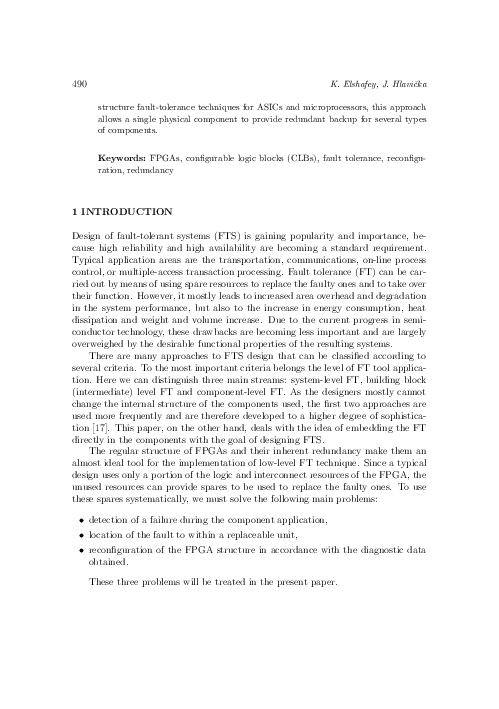Fault-Tolerant FPGA-Based Systems
keywords: FPGAs, configurable logic blocks (CLBs), fault tolerance, reconfiguration, redundancy
This paper presents a new approach to on-line fault tolerance via reconfiguration for the systems mapped onto field programmable gate arrays (FPGAs). The fault detection, based on self-checking technique, is introduced at application level; therefore our approach can detect the faults of configurable logic blocks (CLBs) and routing interconnections in the FPGAs concurrently with the normal system work. A grid of tiles is projected on the FPGA structure and a certain number of spare CLBs is reserved inside every tile. The number of spare CLBs per tile, which will be used as a backup upon detecting any faulty CLB, is estimated in accordance with the probability of failure. After locating the faulty CLBs, the faulty tile will be reconfigured with avoiding the faulty CLBs. Our proposed approach uses a combination of hardware and software redundancy. We assume that a module external to the FPGA controls automatically the reconfiguration process in addition to the diagnosis process (DIRC); typically this is an embedded microprocessor having some storage for the various tile configurations. We have implemented our approach using Xilinx Virtex FPGA. The DIRC code is written in JBits software tools. In response to a component failure this approach capitalizes on the unique reconfiguration capabilities of FPGAs and replaces the affected tile with a functionally equivalent one that does not rely on the faulty component. Unlike fixed structure fault-tolerance techniques for ASICs and microprocessors, this approach allows a single physical component to provide redundant backup for several types of components.
reference: Vol. 21, 2002, No. 5, pp. 489–505


